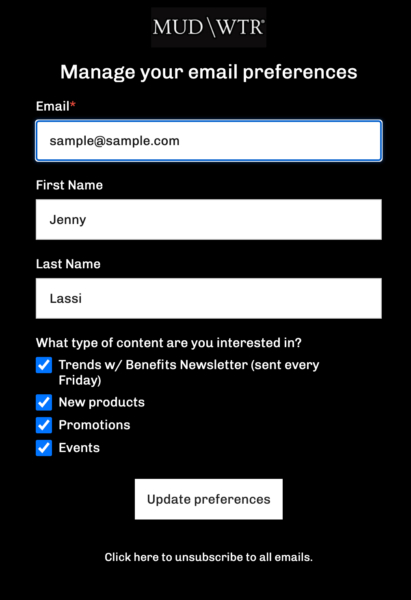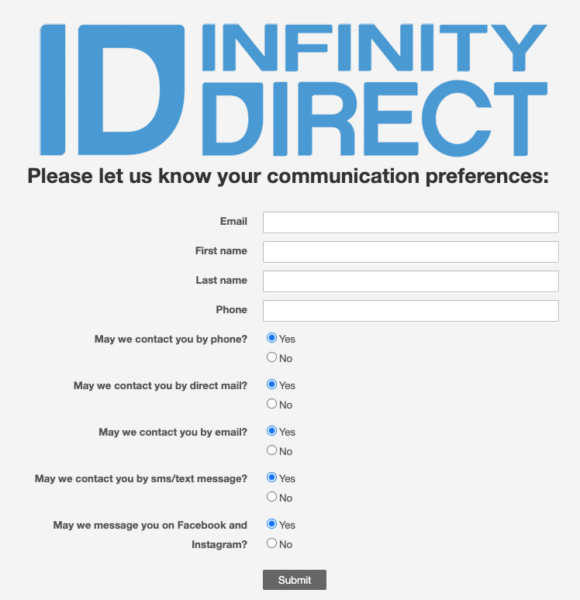Privacy Compliance & Consumer Communication Preferences

I’m sure you all have heard of an email preference center before – where if someone wants to opt out or opt down from receiving emails from a sender, they can click on an “unsubscribe” or “manage preferences” link in an email to get to a web page that looks something like this:

An email preference center lets you pick/choose what types of email you do/don’t want from a sender based on your preferences. Sometimes when buying a product, you may notice you automatically start getting emails, and all possible emails, from the product. This is because right out of the gate, they added you to all possible communications, and in the U.S., you can send anyone an email (even if they didn’t opt in) as long as you have a method to unsubscribe, per CAN-SPAM compliance.
But what about other marketing channels? What consumers really need/want is a communications preference center so they can choose what and where they want to see your messaging. A preference center will also allow you to give consumers the right to be forgotten, which is included in many data privacy policies both in effect and those going into effect on a state-by-state basis. Now is the time to move in that direction.
Communications Preference Center
Giving consumers a choice is the right thing to do. If you don’t already have a communication preference center in place, make it your 2024 priority to be compliant with many states’ right-to-be-forgotten privacy legislation. The biggest hurdle to implementing such a thing is the complexity of executing messaging while honoring a consumer’s choice in what they do not want to receive from you. This ideally involves the preferences being stored in one CRM database (source of truth for all communication preferences regardless if that system also sends/deploys/pushes messages); and if messaging is delivered from separate systems, there must be some integration to make sure data is updated in these other communication platforms, such as for email marketing, SMS messaging, telemarketing, etc. You can also use this same preference center to manage all types of communications.
Just like the National Do-Not-Call list, there is a National Do-Not-Mail list that will remove you from most promotional communications from most businesses you don’t have a relationship with. If you have or employ telemarketers or send direct mail, be sure you are suppressing any consumers from your communications who went opted to remove themselves from such communications.
What a Communication Preference Center Looks Like
A communication preference center is basically a web form that, when a consumer makes their choices and hits the submit button, the form-submit action initiates an API call to write data to a single database or multiple databases. That form-submit action can add a consumer to a list or remove them. Then, when marketers use their system(s) to send messages, they would do so while taking suppressions into consideration. Can human error be an issue where mistakes can be made? Yes, of course. Are there ways to make sending communications in any/all systems as human-proof as possible? Yes, there is.
Here is an example of what a communication preference center could include:

The concept of a communications preference center may be new to many businesses. With the increasing consumer privacy laws and multiple communication channels for which to manage compliance/opt-in permissions, having a single source of truth for preferences is a logical choice. If you are interested in exploring an integrated communications preference center, let’s talk.
